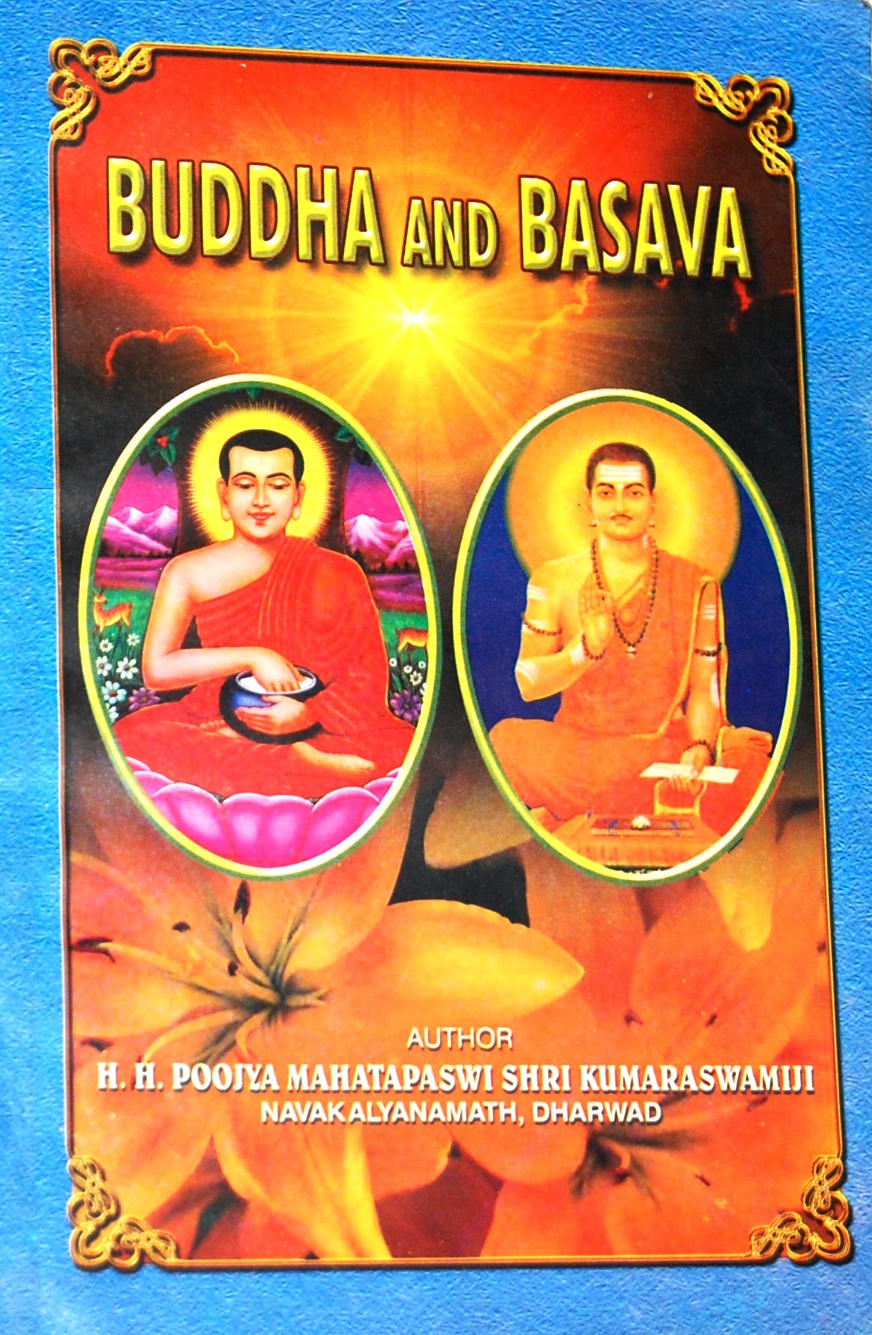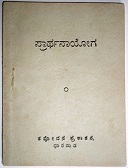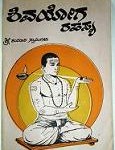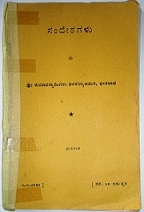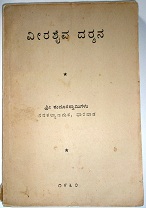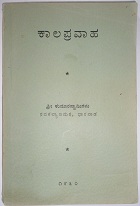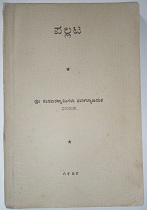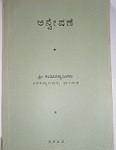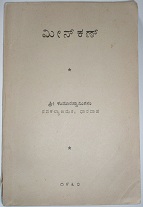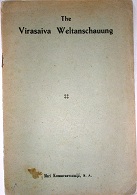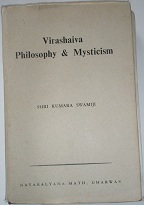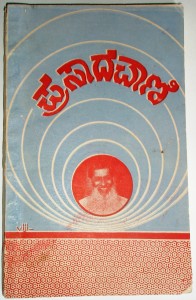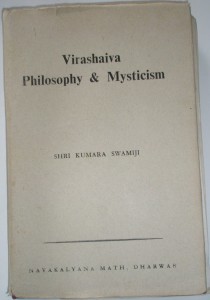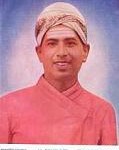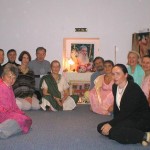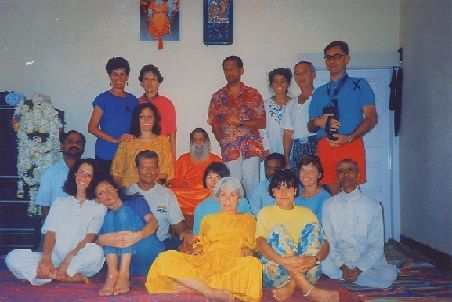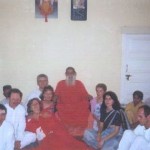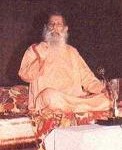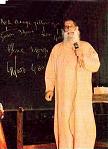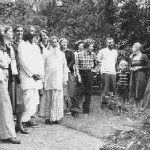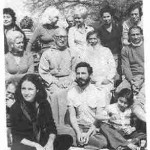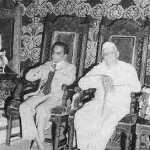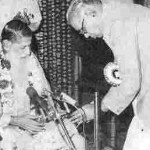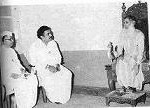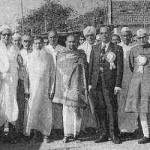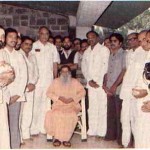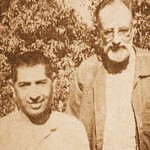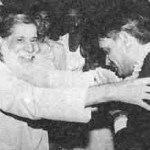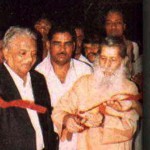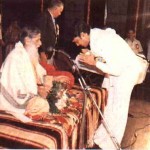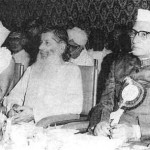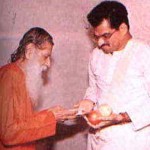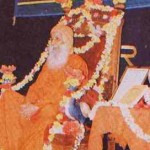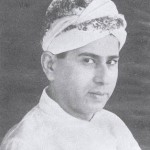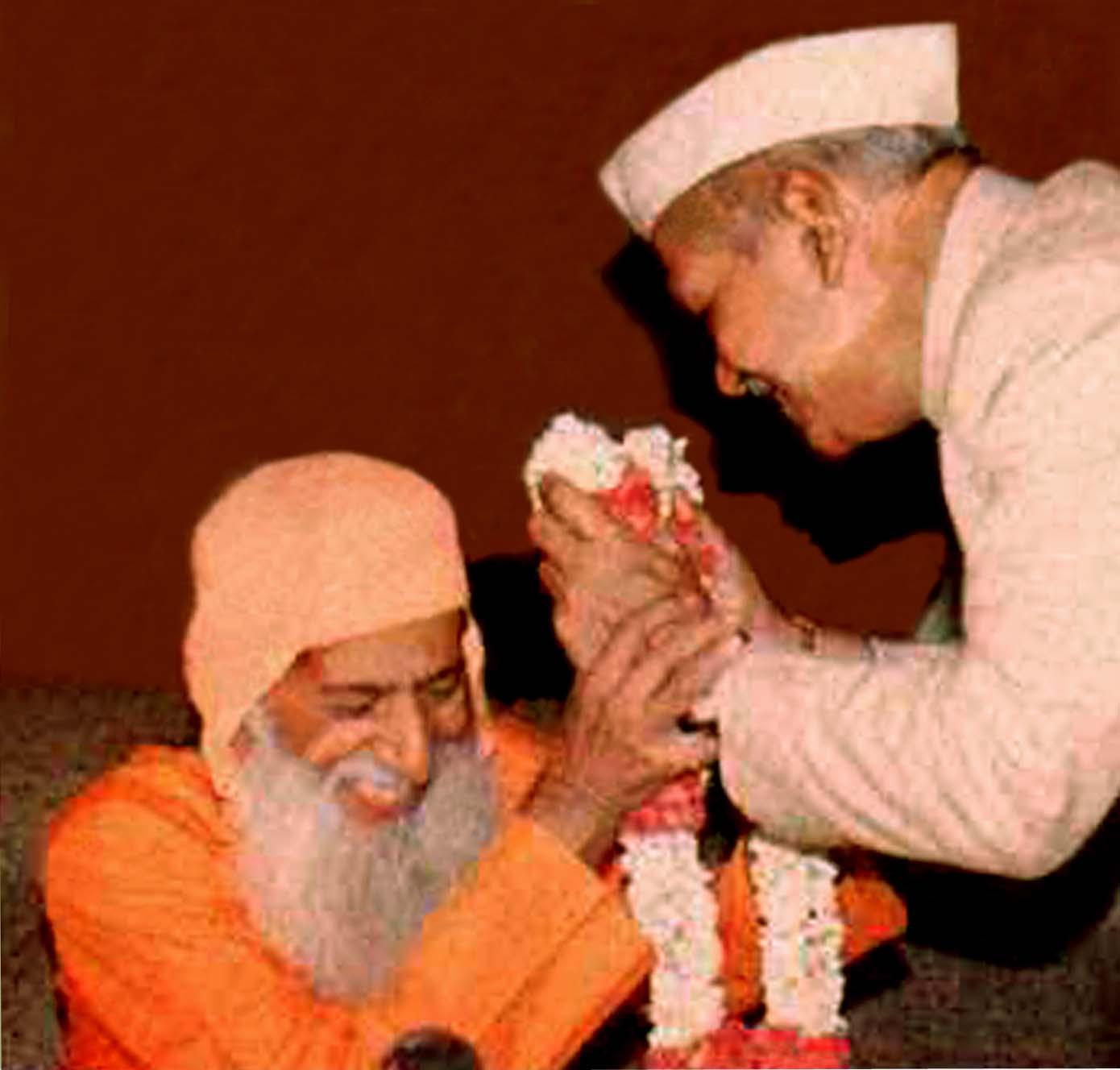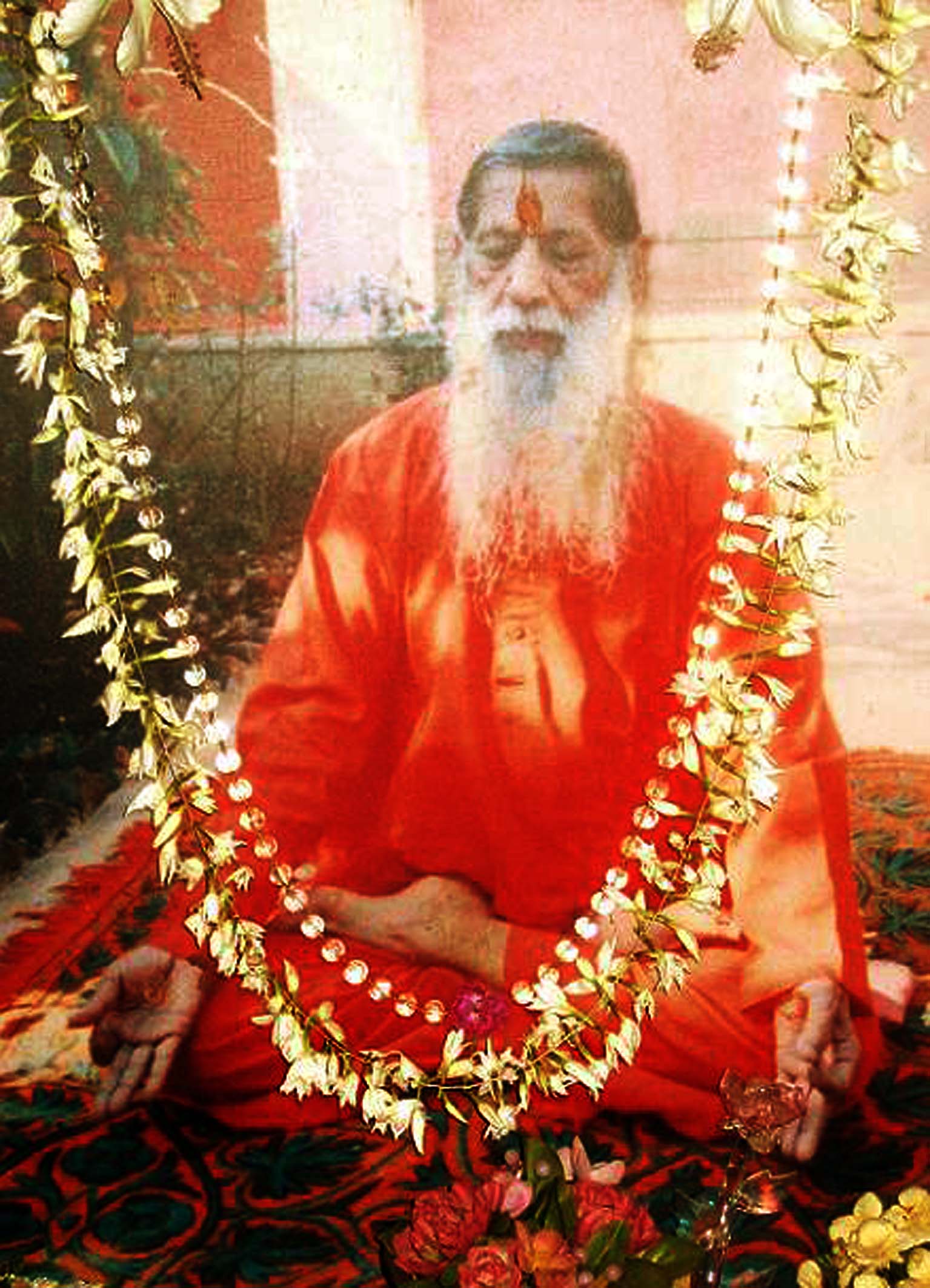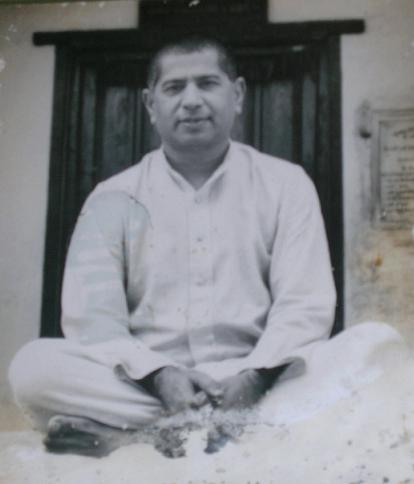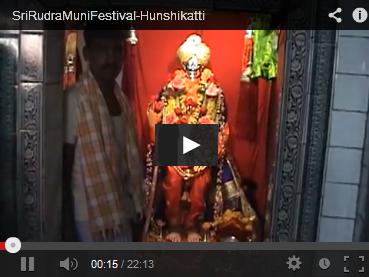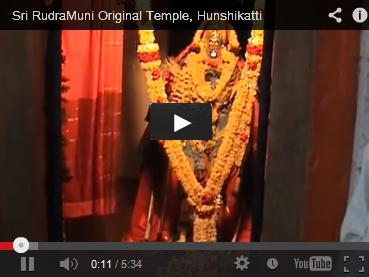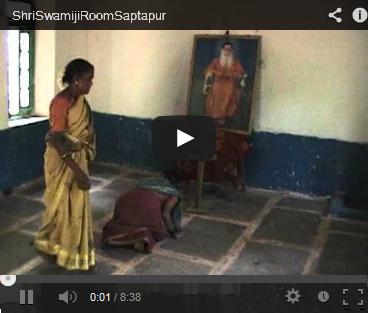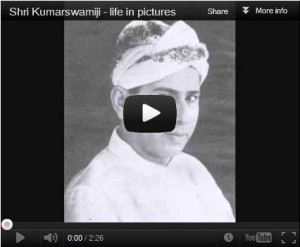The reality of the world is upheld in popular religion by way of suggestive imagery. Basava says that world is God’s workshop for creating men, while Prabhu sings that it is God’s epistle to mankind. Both are right because the twin aspects of the world – active and contemplative – are accepted as true. God has created humans not only for contemplation but also for action. He created us in his own image. God is thought and action, nay in Him there is no thought which is not simultaneously followed by consorted action. The Shunya-sampadane, therefore, admonishes us not despise all worldly things and spurn terrestrial life, so that we may concern ourselves with only the celestial affairs. What is terrestrial life if it is not a prelude to celestial life, a step towards its attainment?
The Vachana-shastra says: “There are neither two Gods nor three but there is only one God who pervades and is the cause of all things. He is the Divine Mind, the infinite wisdom that produced the world we see.” The Veda says, “God is one but the wise speak of him variously,” The Jewish scripture says: “There is one God and God is one, the ever-living.” St. Paul says: “God in whom we live, move and have our being.” Thus we see that where ever we find a true definition of Godhead, it strikes a cord which is similar in tone and universal in appeal. Why is it then that we can not have one ideal or one religion? It is because through God is one, his children are many and comprehend him in many ways just as there are different roads to reach the destination. There are those who rest content to know Him as they hear of him from others; there are some others who try to grasp Him wholly by the aid of reason and logic; there are those who try to reach Him through dedicated Bhakti and a chosen few who are never satisfied until they perceive the Divine Vision. So religion falls into these categories : ritualistic, rationalistic and real. Ritualistic or dogmatic religion is the religion bound by creeds, rationalist religion is the religion of discussion and theorizing, the Bhakti religion is the religion that does not demand anything but a total dedication and surrender to the Divine Will and real religion is the religion of direct perception. These represent the fundamental steps in religious development of an individual and one travels along the path from the lower to the higher form, gradually discovering the basis of harmony.
In all dogmatic religions, each one claims that his religion is the only religion, his God is the only God and his prophet is the only prophet. The religious ideal is confined to a narrow circle in the dogmatic religions. A rational person on the other hand is ready to make allowances for other’s point of view but being unable to realize the ideal of harmony, remains on the plane of speculative reason. The true religionist is he who actually feels God’s love and touch, perceives His presence and hear His voices echoing within himself. Only when we reach this state are we able to see clearly that we are the children of the same God and that we are strung on the same thread of universal spirit. The Shunya-sampadane strikes a true note of spirituality suggestive of real religion in spite of the fact that it contains rituals which are few and simple and the reason which is speculative and critical.
Basava says:
“Abstain from theft and hatred,
From utterance of untruth and anger,
From contempt for others
And flattery for the self proper
And derision of a fellow self,
This will ensure purity
Of the self and the environment
And this will also win Thee
The grace of Kudal Sangama.”
Sri Kripa declares in the Gita, “He who hates no living creature and is kind and compassionate to all, who is free from selfish desires and egoitism, equal minded in pleasure and pain, loving and forgiving, he is ever dear to me.” We find Buddha teaching his disciples: “Not to blame, not to strike but to live restrained under the law and to dwell on the highest.” Christ says, “Love your enemy. Bless those that curse you. Do good to them those hate you. Pray for those that despise and persecute you, that you may become the children of your Father, who is in heaven.” That these sayings are from widely different sources and that there is a vast difference in tone is clear, yet through all of them runs the same sublime note of tolerance. The true spirit of religion leads to tolerance and universality. Universality can never be accompanied by destroying the diversity of life or by summarily leveling all human differences by the stroke of a brute force. There is another way by which we can preserve individual variations. That is by finding commonality and unity, understanding and appreciation of the differing view-points. It is not by trying to forcibly convert all people to one religion that universal brotherhood will be attained; it is by realizing oneness in our hearts. Universality is a question of realization in the individual consciousness. Man must first feel the spirit of God within himself before he can exhibit tolerance and love in the society. Man is not religious because he belongs to a church; he is not spiritual because he can not recite long passages from the Scriptures; a man is religious because he is spiritually awakened, because he is blessed by the Divine Presence and Spirit. Man is not strong enough to stand alone, for the individual ego has its limitations. But there is something within each individual which is unlimited, undying, and undecaying. It is the spirit which even the word cannot pierce, fire cannot burn, water cannot wet and air cannot dry. When we feel the living presence of that spirit, when our consciousness unfolds and puts us in tune with ineffable peace and bliss. This realization of spiritual unity forms the very foundation of the Shunya-sampadane, as it is of all true religions.
Allama Prabhu, who is the central figure of the Shunya-sampadane, is a Godman and a God’s advocate. According to the Indian tradition the spontaneous utterances of a Godman are known as Shruti. The Godman or sage speaks of God out of fullness of his illumined experience. His knowledge of God is not discovered, but is revealed to him with effortless ease and God’s voice. It is therefore said to be a direct disclosure from the Other who is not wholly other, a Beyond that is within, a revelation of the Divine. It is symbolically described as the breath of God or as the Divine Energy which quickens the fertilization of the seed, which kindles the flame of human spirit and which opens up the entire panorama of human experience beyond human description. Only a Saint like Akka Mahadevi can find appropriate words to describe the boundless beauty and brilliance that the human eye cannot completely capture. In plain language Shruti or “revelation is not any external message delivered to a man from without but divine afflatus springing from within, the result of inspiration through God-intoxication.” It is for this reason that every mystic, saint or prophet says that it is not he but God who speaks through him. This is sort of occasionalism, where the seer serves merely as an occasion or instrument for the creative activity of God. If this conception were to be accepted, then it would be necessary to extend the notion of revelation beyond the borders of religion in its narrow sense and include all apprehension of spiritual value, within its scope. The fact that most of the religion is mixed with superstition and positive evil would be explained on the ground that revelation, being always through persons, must be conditioned by the individual capacity of the persons through whom the divine disclosure takes place. Hence, the need to look to the integrity and psychic purity of the process. This need involves the historical study of the personal aspect of revelation.
The ethical monotheism and the universalism of the Upanishadic prophets from the eight century B.C. to the close of the eight century A.D. marked the flood-tide of the spiritual religion in India. We note meanwhile that in a nation as in an individual, a high tide of spiritual life is usually followed by an ebb, a period of relaxed energy succeeds the time of tension. So was it in India. The day came when the voice of the prophet fell silent and there was no longer any Divine certitude. The reaction took the form of a return to legal and ceremonial religion in an amplified and intense form. Of this, the priestly code was the memorial. The return of the ritualism meant a return to particularism and the loss of the larger and more human outlook. Religion in India became mechanized and the worship of the spirit was depressed and suppressed by a burden of observances and prohibitions. When religion becomes a tyranny of sheer observance, it can only be saved from decay by a new and powerful uprising of the truly religious and ethical spirit which breaks the dominance and monopoly of a priestly caste and proclaims the freedom of the faith. This happened in Karnataka during the 12th century when a religious renaissance under the leadership of Basava and Prabhu rehabilitated the faith of man in the freedom of the soul, in the conservation of the spiritual values and in the amelioration of mankind. Basava and Prabhu, the two commanding figures of the renaissance, do not step up in the stage divorced from all connections with what has gone before; their reaction against the existing religion is made possible by their positive relation to the individual religion. But we can not fully explain them by the analysis of past history or by a study of the existing religious environments. They will always remain a unique element in the depths of personality.
The general refrain to the vachana literature as well as the popular religion which suggests reality of the world, life and truth by way of simple similes and metaphors redolent with touches of occultism, humanism and Gnosticism. The sayings of the Veerashaiva saints, which can be set to music, are as good as poetry. Popular religion does not express itself in dry prose but the medium of melodious poetry, which by the way is the natural and artistic vehicle of human expression. These utterances which spring from personal experience in life reflect the rhythms of the human heart. The child is delighted from the rhythms of the nursery rhymes, the young give vent to deep emotions through songs and the old folks seek shelter in the music and merriment for their delectation. The philosophy of the Indian people is embedded in their folk-songs and folk mysticism which can be traced almost to the beginning of their civilization. These mystical lyrics are heard even today from the lips of the common folks. The philosophical strain that spontaneously flows out of this folk-lyric is remarkable uniform in ideas and woven into a complete and consistent texture in which the parts are pervaded with the pattern of the whole.
Popular religion starts with the assumption that the Truth is Beauty and Joy is a thing for realistic and not for understanding. Reality is never revealed to the discursive reason; it is conveniently revealed in devout emotions. It is visible when the subject achieves complete identity with the object and the identity is achieved only by means of emotions that are elemental in man. Hence the mystics say that love succeeds when intellect fails. As Akka Mahadevi says, it is not the intellect but love that reveals the path of identity or as Basava would say it is not the path of truth lighted by simple emotions of the heart. This path is not high-browed scholasticism, nor for dialectical acumen which rests satisfied with the juggling of words. The scholastic or the dialectician is like a jeweler who comes into the garden to appraise the lotus by rubbing it on the touch stone. Truth, like a flower, is to be enjoyed with emotional insight; it cannot be appraised by logic.
For popular religion, “Love is the unique source of the abundant life which unites the finite and the infinite orders. All is soaked in love which is described by the mystic as a form of God. Nay, God is the one Love who pervades the world, discerned in his fullness only to be the eyes of Love.” Those who know God as Love share, though they shudder to tell, the joyous and ineffable secret of the universe. The songs of the ancient Arivars and Alvars, of the medieval saints, the sayings of the Lingayat mystics, the verses of the Sufis, the lyrics of Sahajiyas and the lays of the modern wandering Bauls are all marked by a naive spiritual fervour and by a frank admission of the pragmatic needs of life. They cut asunder the chains of introspective analysis and soar high on the wings of lyrical ecstasy like birds whistling their notes in the wide open expanse of the spiritual firmament. The one dominant and recurrent note of their lyrics is universal love. Of the Veerashaiva mystics, Akka Mahadevi is the best representative of this theme of love. Kabir sings of this love in a sonorous strain;
“One love it is that pervades the whole world
Few there are who knot it fully
They are blind who hope to see it by the light of reason
That reason which is the cause of separation.
Love is the music of the meeting of the soul with soul
It is the music of forgetting the sorrows
It is the music that transcends all coming in and going out
The strain of love fills the days and the nights with music
And the world is listening to its melodies.
Mad with joy, life and death dance to the rhythm of this music
The hills and the seas and the earth dance
The world of man dances in laughter and tears
The double currents of love and detachment,
Like the mingling of the streams of Ganga and Jamuna.
In his heart the sacred water flows days and night
And thus the cycles of births and deaths is brought to an end
Held by the chords of love, the swing of the ocean of joy sways to and fro
And a mighty sound beaks forth in song!”
The popular religion of India, though very old, found its first exponent in Buddha whose gospel gave a new status to the commoner. Buddha preached the gospel of salvation through love, through nature’s own way. The Shaiva and Veershaiva saints carries this tradition forward and this tradition had its best advocacy in the Veerashaiva saints headed by Basava. Basava describes all differences of castes, vocations and rank and exhortes his followers not to imprison their religious life within the temple but carry it in to their acts. Inspired by the popular religion preached by Basava, the saints and the poets – both males and females, who emerged from the lowest social orders – spoke in a style comprehensive and intelligible to the common masses. So we meet with Madivala Machayya, a washerman; Medara Kotayya, a basket-weaver; Ambigara Chaudayya, a ferry man; Hadappa Appanna, a barber; Dakkayya Bommanna, a drummer; Turugayi Ramanna, a cowherd; Sunkada Bankappa, a tax-collector; Kinnari Bommanna, a gold-smith; Vakkalu Madayya, a farmer etc. and a host of women mystics such as Satyakka, Muktayakka, Lingamma, Rammevve and Kalavve. It is learnt from the early Lingayata works that men and women of various faiths flocked under the banner of Basava, from countries like Panday, Cola, Chera, Gurjara, Orissa, Bengal, Kashmir and Nepal. These popular philosophers approached the problems of life from the view point of a commoner and gave it a practical turn. Their spirit was free from superstitions and rigidities which caused stagnation among the classical Indian schools. Against the sterility of the orthodox systems, the new popular appeals awakened a fresh spiritual fervour and let loose great creative power which until that time lay dormant. A new philosophy based on human values sprang forth and began to blossom. Founded on the latent divinity of the human soul, on the universality of love and respect for all and on the Divine Will and Power of emotions emanating there from. It released powerful spiritual energy hitherto pent up by social barriers among the dumb millions of the soil. Naturally, the call and the response was reciprocated by the poor and the neglected, illiterate and innocent victims of the caste system. The new masters, in spite of their humble birth and position, rose to the height of the social esteem and popularity. The popular religion spread over the entire spectrum of the society – the rural opera, the minstrealy, the nursery rhymes, the festive folk chorus – all bore the same touch. The Veerashaiva saints and mystics continued their low vocations side by side with their holy mission. They believed in the honest, productive, useful and devout life of a householder. They had no pretensions to any standard education or to any literary techniques and requirements. Yet their pithy sayings penetrated into the hearts of the people, lifted from their soul the inertia of the daily chores and sowed the seeds of the new popular religion.
The reality of the world is upheld in popular religion by way of suggestive imagery. Basava says that world is God’s workshop for creating men, while Prabhu sings that it is God’s epistle to mankind. Both are right because the twin aspects of the world – active and contemplative – are accepted as true. God has created humans not only for contemplation but also for action. He created us in his own image. God is thought and action, nay in Him there is no thought which is not simultaneously followed by consorted action. The Shunya-sampadane, therefore, admonishes us not despise all worldly things and spurn terrestrial life, so that we may concern ourselves with only the celestial affairs. What is terrestrial life if it is not a prelude to celestial life, a step towards its attainment? In the fourth chapter of the Shunya-sampadane, Prabhu praises Basava in one of his sayings as one who sees through the connecting link of heaven and earth; Basava tells his followers not to separate the Earth from the Heaven. Earth and Heaven or the Iha and Para are one, just like the means and the end, are the same. Hence his exhortation after the manner of Mazini: “Do not tell us that the earth is of clay, the earth is God’s. He created it so that we might climb by it to Him. The earth is not a sojourn of expiation and temptation, it is the place appointed for our labour of self-improvement and of development towards a higher state of existence.” The life of the soul is sacred in each one of its stages and on every plane of its travel; hence every stage must be a preparation for the next, every temporary progress must help the continuous upward progress of the immortal life which God has kindled in each one of us.
The reality of life is maintained in popular religion together with the consideration of good and evil as parts of the complete whole. Life cannot be defined by human life may be linked to a journey; the enjoyments and the blessings we have are only small inns on the road-side, where we may rest and get refreshed so that with new strength we may press on forward to the end. And what is the end? The true end of life is to know the life that never ends. Yes, that is true, for life immense and immeasurable. Life is no idle dream, it is a solemn reality. It is a sacred burden which we bear and are required to bear with fortitude and solemnly, ‘failing not for sorrow, faltering not for sin, but onward, upward till the goal is won.’ The idea shared by many that life is a vale of tears is just as false as the idea shared by the great majority that life is a place for fun and entertainment. Remember that life is neither pain nor pleasure; it is a serious business demanding courage and self-sacrifice. Life is the only counselor and wisdom filtered through personal experience does become a part of the moral issue. The very common place of life are components of its eternal mystery. The utmost we can get out of life is its discipline for ourselves and its usefulness for others. Life is a discipline for a web of mingled yarn, good and ill together. This concept has taken the form of comedy and tragedy in literature. The effect of comedy is “to convert what is melancholy and what is tiresome in the actual life of society into the charming laughter and glittering fun.” But laughter seems to be less profound than tears. For tears warn us of danger while laughter lulls us into false sense of security. Tragedy then arises mainly out of suffering and pain, union with God through pain and suffering, rather than pleasure has always seemed comparatively more real to man. The denouncement as developed by the force of circumstances, through the eye of suffering, must end in tragedy. If the dramatist tells us of the tragedy arising from the conflict between good and evil, it is because his vision is too short-sighted to behold the end. For, the ultimate vision of the spiritual faith resolves the tragedy into triumph and leaves only the epic of achievement and the lyric of praise.” This is possible in the mystic literature, simply because the ultimate vision of the spiritual faith is a valuable asset to the mystic. It is needless to say that the Vachana-shastra which is vibrant with mystic truth, visualized life not as a play of pain and pleasure but as a process of creative joy.
Why is there evil? Why is there pain? Are they part of life? Yes, they are. Since our intellect picks up single actions from the total life, they appear as evil or ugly. When man pulls down the walls of individualism and merges his activities in the universal dynamism, actions lose their intellectual colouring and all distinctions between good and evil fade away. Grief and sorrow are relative to our physical states. When the canvas of life is viewed as whole these sorrows appear to be a part of joy. Joy is not in pleasure but it is in the discovery of life. This discovery of life is art and this is why art brings joy. We feel the spirit of freedom in art because it gives us a glimpse of the reality. We enjoy a work of art because in it we see truth where good and evil, happiness and sorrow are in their proper place and setting. Where is love without pain, love that is the source of deepest delight? Pain ushers us into the depths of feeling and stimulates the urge to seek the truth. The pain that comes from the Beloved is the sweetest of all tastes. If the goal is joy and if suffering draws us nearer to the goal, then suffering is an inalienable part of joy. The picture which shows the dark background of the sky pierced with the bright flash of lightning blends the two into a finished work of art. Evil and pain are like parts of composite picture. They cannot be discarded; they can only be overcome on our march towards a fuller self-realization. Life is therefore not an evil to be shunned but a joy to be discarded and enjoyed in its infinity, that is, in its overall context and identity.
This is the verdict of Vachana-shastra.
– OM SHANTI | OM SHANTI | OM SHANTIHI –
This article is taken from H.H.Shri Kumarswamiji’s book, ‘Veerashaivism : Comparative Study of Allamprabhu, Basava, Shunya-Sampadane And Vachana Shastra’.











